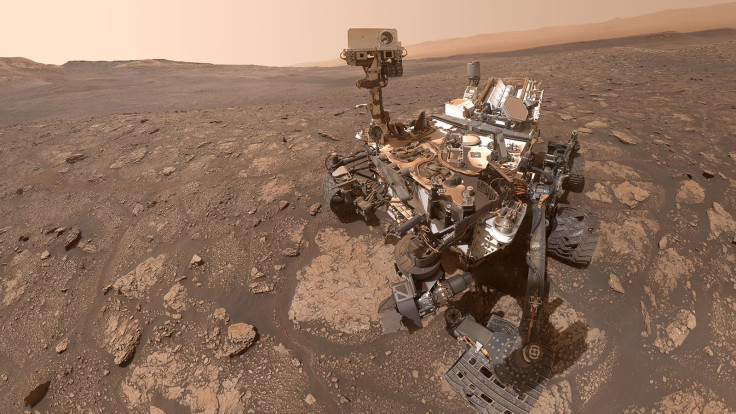NASA's Curiosity Rover Captures Special Sunset View On Mars, 'Rainbow-Like' Display [Photo]
KEY POINTS
- The Curiosity Rover got a nice view of the Martian sunset
- It captured sun rays and an iridescent cloud
- The rover is currently on a twilight cloud survey
NASA's Curiosity Rover has called the Red Planet its home for years now, but it still captured a rather rare sight only recently: the sun rays of a Martian sunset and an iridescent "rainbow-like" cloud display.
Even after being on Mars since 2012, the Curiosity Rover was still able to capture another "first." It caught a special view of "sun rays" on Mars on Feb. 2, NASA's Jet Propulsion Laboratory (JPL) noted. While one might think that the sun rises and sets on the Red Planet as it does here on Earth, such views are actually quite rare.
In fact, it is said to be the first time that such sun rays, called crepuscular rays, were viewed as clearly on the Red Planet.
In the photo that was shared on Twitter, the sun's rays can be seen spilling out from the Martian horizon. While it's not quite as clear as a sunset might be on Earth, as Martian sunsets tend to be quite "moody," the signature rays of a sunset can clearly be perceived.
"Well, this is a first..." the Curiosity Rover's official Twitter account noted. "As I watched the sunset last month, I captured something spectacular: My team says these are some of the most clearly visible images of sun rays we've ever seen on Mars!"
Well, this is a first... 😍
— Curiosity Rover (@MarsCuriosity) March 6, 2023
As I watched the sunset last month, I captured something spectacular: My team says these are some of the most clearly visible images of sun rays we've ever seen on Mars! pic.twitter.com/HIgzZHdAyV
But Curiosity's special views while on the job don't stop there. On Jan. 27, just days before Curiosity saw those sun rays, it also captured another unique sight in the form of an iridescent cloud.
In the photo, which can be seen here, one can see the feather-shaped cloud illuminating the already-darkening Martian skies after sunset.
"Where we see iridescence, it means a cloud's particle sizes are identical to their neighbors in each part of the cloud," atmospheric scientist Mark Lemmon of the Space Science Institute explained in the news release. "By looking at color transitions, we're seeing particle size changing across the cloud. That tells us about the way the cloud is evolving and how its particles are changing size over time."
Curiosity captured the special views while doing its twilight cloud survey. Beyond watching the Martian clouds go by, such surveys may actually shed important light on the weather on the planet.
So far, the survey is still ongoing, so who knows what else the veteran rover may still see? It started in January and is expected to end this month.

© Copyright IBTimes 2024. All rights reserved.






















